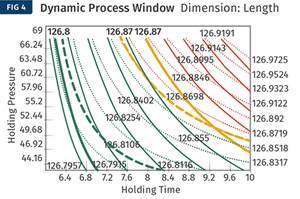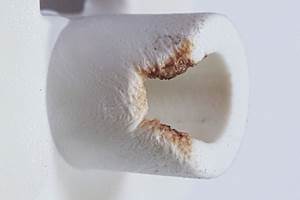More Hydraulic Presses Get Energy-Saving Servo Drives
Injection molders who want to save energy costs have a growing number of alternatives.
Injection molders who want to save energy costs have a growing number of alternatives. They could buy a more expensive all-electric machine. Or hybrid presses, in which some functions, such as the screw drive, are powered by electric servo motors, offer a way to capture much of the energy efficiency of all-electrics at lower cost—at least in high-speed applications. Now a third way (some call it a type of “hybrid”) is gaining momentum: A growing number of injection press builders are advocating use of servo motors to power hydraulic pumps, while aftermarket firms are offering to retrofit variable-speed drives onto existing hydraulic machines. Both are said to bring the energy efficiency of fully hydraulic machines very close to that of all-electrics at minimal upcharge over a standard hydraulic machine.
The latest news in this vein comes from Milacron LLC, Batavia, Ohio, which has just built its first U.S.-made Magna Toggle Servo machines. The original Magna Toggle was co-developed with Milacron’s Indian subsidiary, Ferromatik Milacron India, in 2005, and the servo version arrived in 2008. Milacron has been importing both versions from India since 2009. Milacron now offers toggle presses only with servo-driven pumps, and their popularity has outpaced the supply from India. That’s why Milacron is now building them here, in sizes from 125 to 400 tons (the full line extends down to 55 tons).
This past spring, Milacron announced the arrival of Maxima Servo two-platen machines with servo-driven hydraulic pumps in sizes from 310 to 950 tons. Standard Maxima models will remain available as long as the market demands them. Also, Milacron is just now extending the option of servo-driven pumps to include its larger Maxima two-platen models from 1100 to 4400 tons.
The new hydraulic options consist of an AC servo motor driving a fixed-volume gear pump. The variable-speed servo drives the pump to deliver just the amount of oil volume required at each stage of the process. The pump can simply stop if no additional flow is required, and it can even reverse direction to provide a rapid drop in pressure, if called for.
According to Milacron’s Brian Bish, product manager for hydraulic machines, and Mark Elsass, manager of applications and technical service, this pump/motor combination is the most efficient means yet available for hydraulic machines. It is said to be at least 40% to 60% more energy-efficient than standard hydraulics or variable-volume types—even what are confusingly called “servo pumps” (like Milacron’s P/Q pumps). Compared with variable-volume pumps, the gear pump is also low cost, simple, and rugged, with fewer moving parts.
Milacron says the Magna toggle machines cost only about 5% more than previous standard hydraulic toggles and come within 5% to 7% of the energy consumption of all-electrics at much lower cost. Magna toggles save additional energy by requiring less oil cooling and ejecting less heat into the plant. Keeping oil cooler also helps it last longer.
What’s more, the servo-motor/gear-pump combination is said to be about as quiet as an all-electric. And because the servo motor is highly dynamic and low in inertia, control and consistency reportedly are similar to all-electrics, contributing to faster start-ups than with conventional hydraulics. All told, Milacron sees servo-driven pumps extending the technological lifetime of hydraulics for molders who prefer that type of machine.
Related Content
Optimizing Pack & Hold Times for Hot-Runner & Valve-Gated Molds
Using scientific procedures will help you put an end to all that time-consuming trial and error. Part 1 of 2.
Read MoreInjection Molding: Focus on these Seven Areas to Set a Preventive Maintenance Schedule
Performing fundamental maintenance inspections frequently assures press longevity and process stability. Here’s a checklist to help you stay on top of seven key systems.
Read MoreBack to Basics on Mold Venting (Part 1)
Here’s what you need to know to improve the quality of your parts and to protect your molds.
Read MoreUsing Data to Pinpoint Cosmetic Defect Causes in Injection Molded Parts
Taking a step back and identifying the root cause of a cosmetic flaw can help molders focus on what corrective actions need to be taken.
Read MoreRead Next
Making the Circular Economy a Reality
Driven by brand owner demands and new worldwide legislation, the entire supply chain is working toward the shift to circularity, with some evidence the circular economy has already begun.
Read MoreFor PLASTICS' CEO Seaholm, NPE to Shine Light on Sustainability Successes
With advocacy, communication and sustainability as three main pillars, Seaholm leads a trade association to NPE that ‘is more active today than we have ever been.’
Read More











